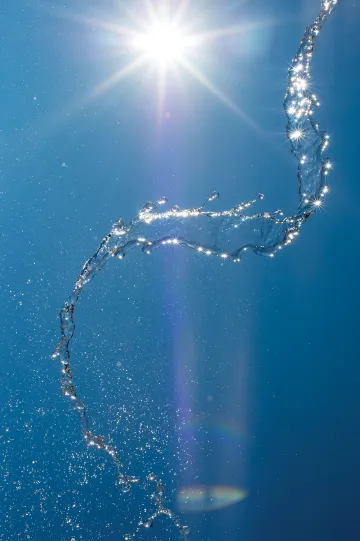Terrestrial Observatory
Biosphere 2 research integrates scientific disciplines
Over the past two decades, the American West has experienced protracted drought. An estimated 100 million trees are dying. Our extraction of ground water is unsustainable.

And researchers are still seeking to understand the global grand challenge of water — including how it flows through biomes.
These are among the issues under investigation at Biosphere 2’s Landscape Evolution Observatory, or LEO, which consists of three artificial landscapes studded with sensors that can track in unprecedented detail how physical and biological processes interact to shape the environment.
“We have had three National Science Foundation proposals funded in the last five years,” says Peter Troch, science director at Biosphere 2 and a professor of hydrology and water resources at the UA. Troch is the lead investigator on the LEO project and has been with Biosphere 2 since the UA took it over in 2007.
“We’re studying, under controlled conditions, questions that are hard to answer in the real world,” he explains. “For example, we are working with colleagues at Johns Hopkins University to test a new theory about how long water resides in hill slopes and how the movement of water affects the transport of solutes.”
‘The rainforest inside Biosphere 2 allows us to test how plants might adjust their water uptake strategies through a controlled drought and model how they will adapt to climate change.’
Work within LEO has application to other projects underway at Biosphere 2. “Rainforest biomes are facing increased drought,” Troch says. “The rainforest inside Biosphere 2 allows us to test how plants might adjust their water uptake strategies through a controlled drought and model how they will adapt to climate change.”
For instance, Biosphere 2 research revealed how woody shrubs are moving into historic grasslands — the deeper rooting ability of these plants allows them to weather drought and high temperatures better than native grasses. “This means that ecosystems are actually becoming more resilient to climate stress,” Troch points out.
Another project at Biosphere 2 seeks to create a novel landscape that blends the natural and built environments. Plants lose water through transpiration, and researchers found that by planting native grasses under solar photovoltaic arrays, the plants act as an evaporative cooler for the arrays — which are limited in production capacity by heat. This system enhances energy output by 4 percent at midday, and the researchers are now building on this work by studying it as a possible model for crop production.
“Ed Bass has been very engaged in these projects,” Troch says. “He has served on the advisory board all along and has attended every board meeting for the past 10 years. His $30 million gift demonstrates how invested he is in this work and its potential to improve our understanding of complex systems.”
